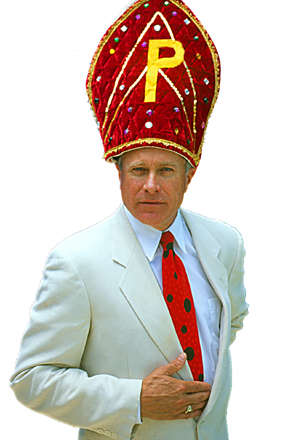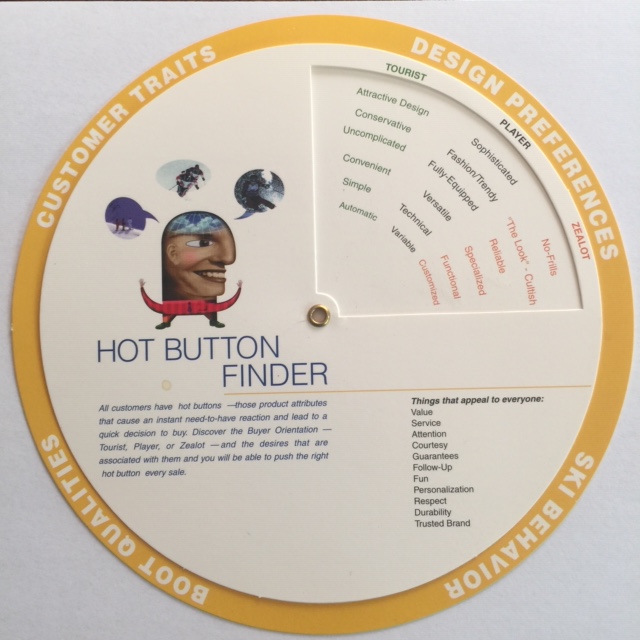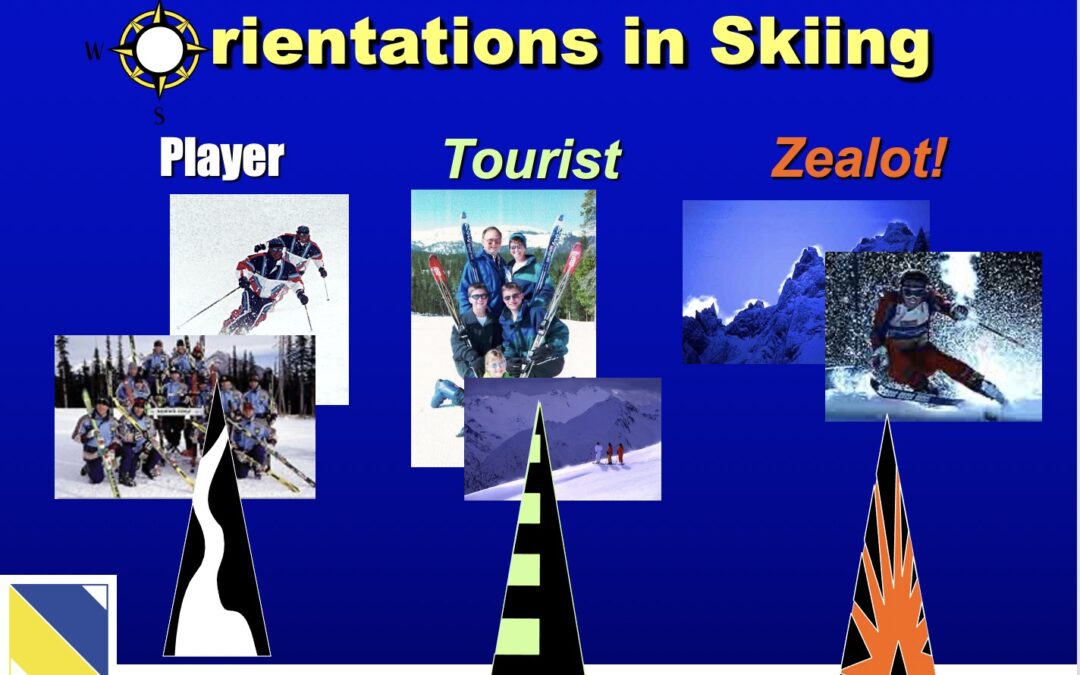
Understanding a skier’s Orientation helps salespeople see skiing from the customer’s perspective.
When Head humanely, if rather brusquely, terminated my tenure in 2001, the ski business in the U.S. was already facing stiff headwinds, a brewing storm that would turn into a full-on debacle when 9/11 disrupted all commerce. I became unemployed just in time for the job market to implode.
I don’t handle inactivity well. I started writing a very long, very dreadful novel, composed a handful of scripts for Warren Miller – and later, Jeremy Bloom – to recite and scribbled batches of brochure copy and white papers for industries as diverse as accounting software, instrumented football helmets that registered concussions and risk assessment based on location.
The pickings were slim, but they wouldn’t have amounted to anything at all were it not for a little help from my friends. Andy Bigford, who I’d worked with at Snow Country, hired me for the Warren Miller gig. A college chum kindly engaged me to write white papers on accounting fraud. But it was Dave Bertoni, an erstwhile colleague from Salomon days, who joined me in creating Desperate Measures: A Training Method for Selling Technical Products at Retail.
Desperate Measures was a multi-media training Bible, complete with a Trainer’s Manual, 3 training modules replete with video and workshop tools to practice the new skills of Relating, Steering and Authenticity. There were charts for managing inventory and tables that explained how to sell to different customer types. I read my lectures from a teleprompter for four days straight without a re-take, which left the technician who controlled the scroll agog in disbelief.
Our videographer was the famed ski cinematographer Bruce Benedict, whom U.S. Ski Hall of Fame inductee Greg Stump credits as his mentor, so production values were first rate. My working relationship with Bertoni was wonderfully simple: whatever I wrote – and I composed tonnage – Bertoni would stand on its head, so my conclusions became the introduction, and visa versa. Worked brilliantly.
Perhaps our most clever creation for Desperate Measures was the Hot-Button Finder, a two-piece wheel that defined the Customer Traits, Design Preferences, Ski Behavior and Boot Qualities desired by three primordial Buying Orientations: Tourists, Players and Zealots.
While some of the instruction in Desperate Measures is perforce dated, this division of the skiing public into three clearly identifiable profiles remains relevant to this day. It should be noted that during the course of a long ski career a person can conceivably migrate from youthful Zealot to grandfatherly Tourist.
Tourists
Tourists ski primarily for social reasons. They want to recreate with family and friends, and if the preferred group activity is skiing, they want to participate. Safety, comfort, convenience and fun are their top-of-mind concerns. They prize simplicity and automatic functionality. Above all, they want to come back in one piece.
Players
Players engage in as many activities as they can fit on the calendar. They ski, but they also cycle, run, ice-climb, kite-sail, you name it, they’ll try it. They’ll devote more time to the sports that they do best, so making progress is important for Players. They believe in game improvement technology, cherish versatility and multi-disciplinary compatibility. Players are more adventurous than Tourists.
Zealots
Zealots are laser-focused on a specific slice of the sport, be it racing, pipe and park acrobatics, mogul competition, chasing powder or backcountry hiking. They seek any edge they can gain in their favored milieu. They’re attracted to precision, detest frills and demand functionality and reliability. Zealots expect a measure of customization will be required to achieve their high expectations.

One of the more ingenious innovations of Desperate Measures was this Hot Button Finder, that associated a skier’s Orientation with his or her product preferences.
So What?
If you’re in the business of selling stuff, it helps to understand what motivates your customers. Aside from this evergreen virtue, thinking in terms of Buyer Orientation is an analytic tool that can applied to any context.
For example, let’s consider what’s happening in the booming backcountry market. Skiers fearful of seeing their resort time rationed feel compelled to join in what appears to be a stampede to out-of-bounds terrain. Players who might have only dabbled in this domain will want to get outfitted for the new activity and even Tourists may feel compelled to gear up or drop out of a cherished family bonding experience.
The trouble with this scenario is that backcountry skiing isn’t meant for Players or Tourists. This is – or until recently has been – the domain of Zealots, people who are dedicated to this slice of the sport and all the requirements for knowledge, fitness, equipment and experience that it entails. Because of their “I’ll try anything once” attitude, Players will be interested, of course, but they won’t like the lack of interchangeability between Alpine and Alpine Touring gear. For Tourists, backcountry touring lacks the protective environment of the resort, never mind that it’s the opposite of effortless.
I’ll leave you to imagine the consequences of an already choked backcountry being shared with enthusiastic but undertrained Players with reluctant Tourists in their tow. I hope I’m wrong, but I foresee trouble in what was once a relatively unpopulated Paradise.
Epilog
Despite Bertoni’s brilliant business plans, Desperate Measures did not survive the decade. We had our share of clients, but we couldn’t combat the massive retraction spreading through the retail specialty channel. Undeterred, we created a parallel module for resorts called Planet Hospitality.
We attracted exactly one client, Sipapu Ski & Summer Resort in New Mexico. As a dismal decade drew to a close, in my dreams I would visit an imaginary world where Sipapu elders would reverently pass Planet Hospitality training tools around the campfire as if they were ancient relics bequeathed to them for reasons that can no longer be recalled; but they are no less loved for being useless.

